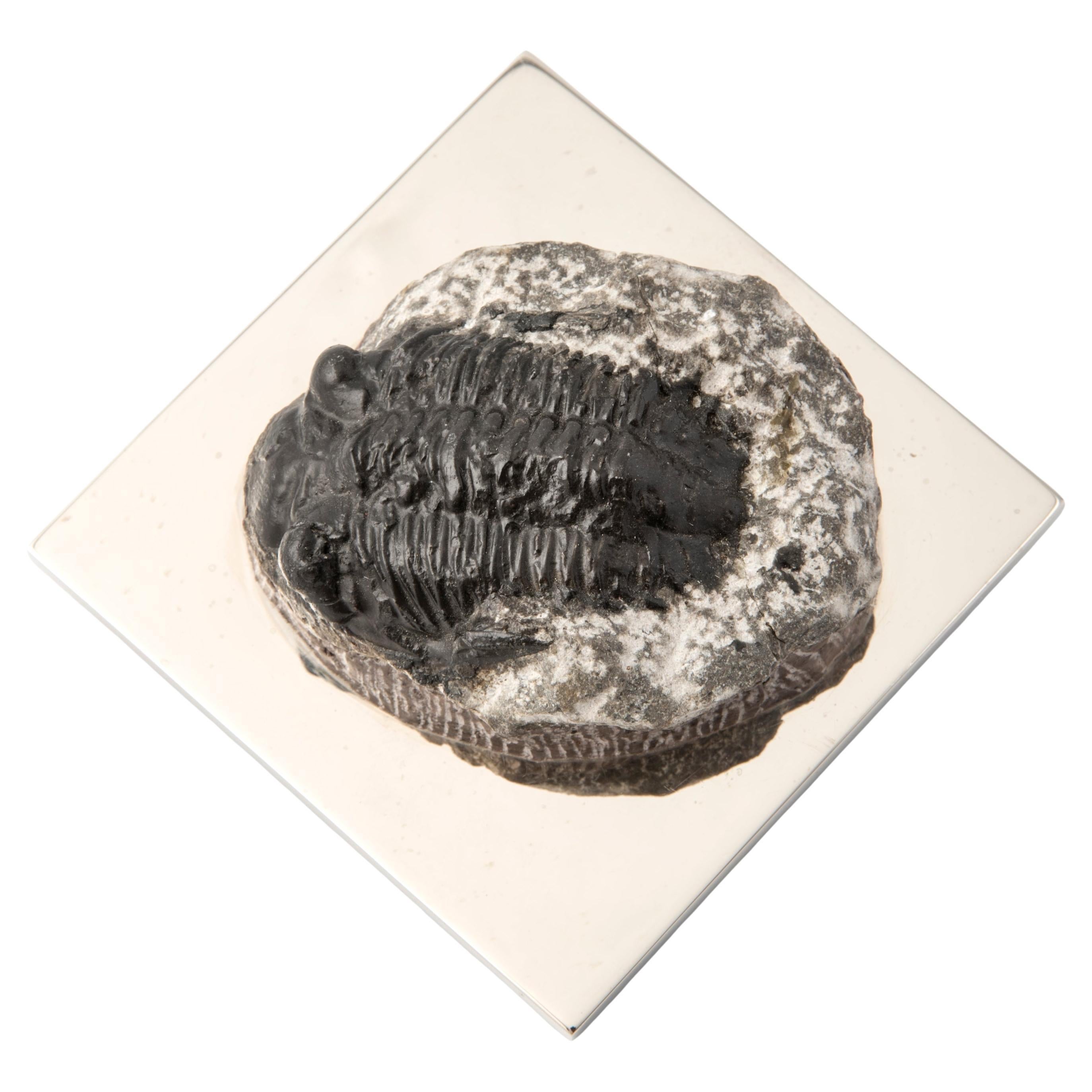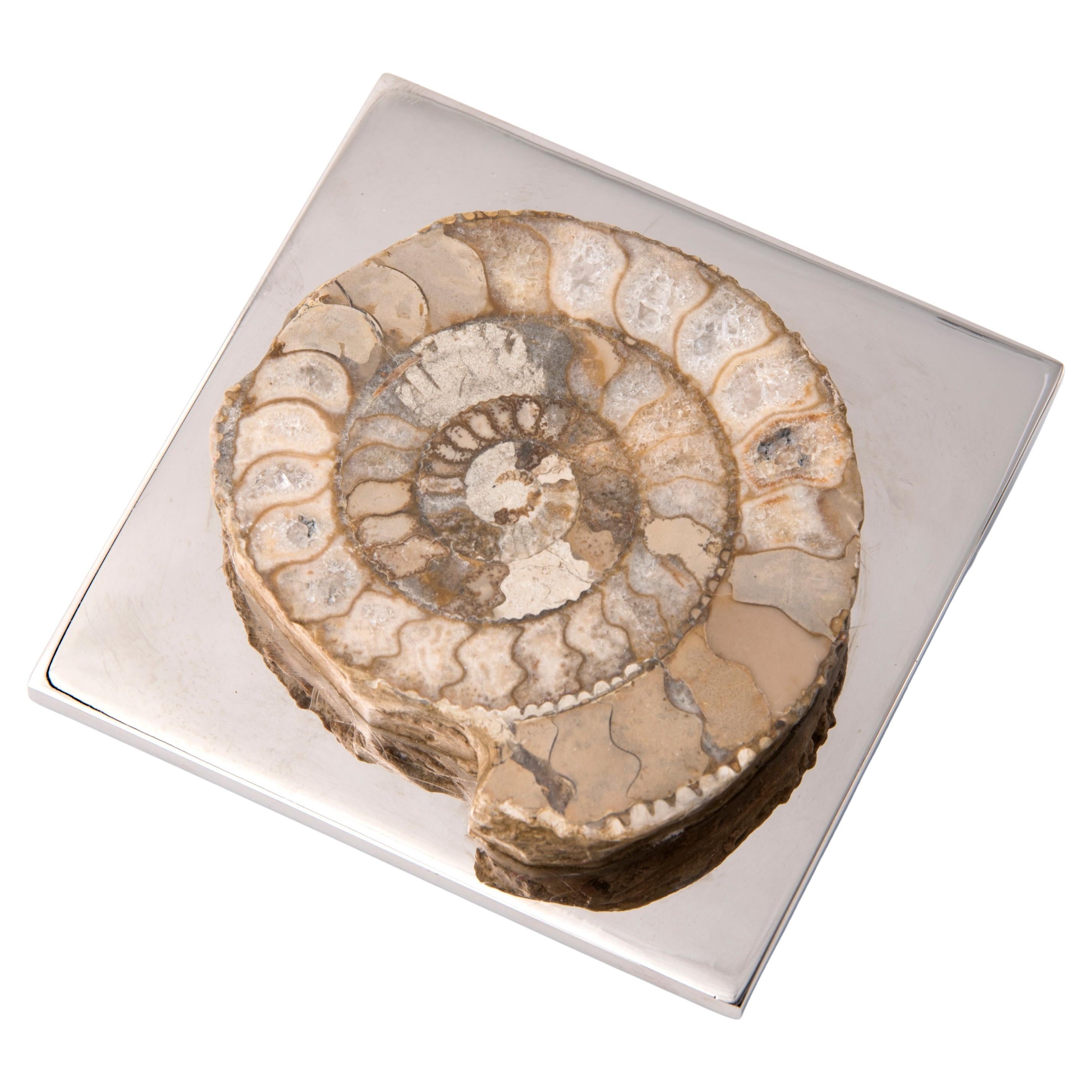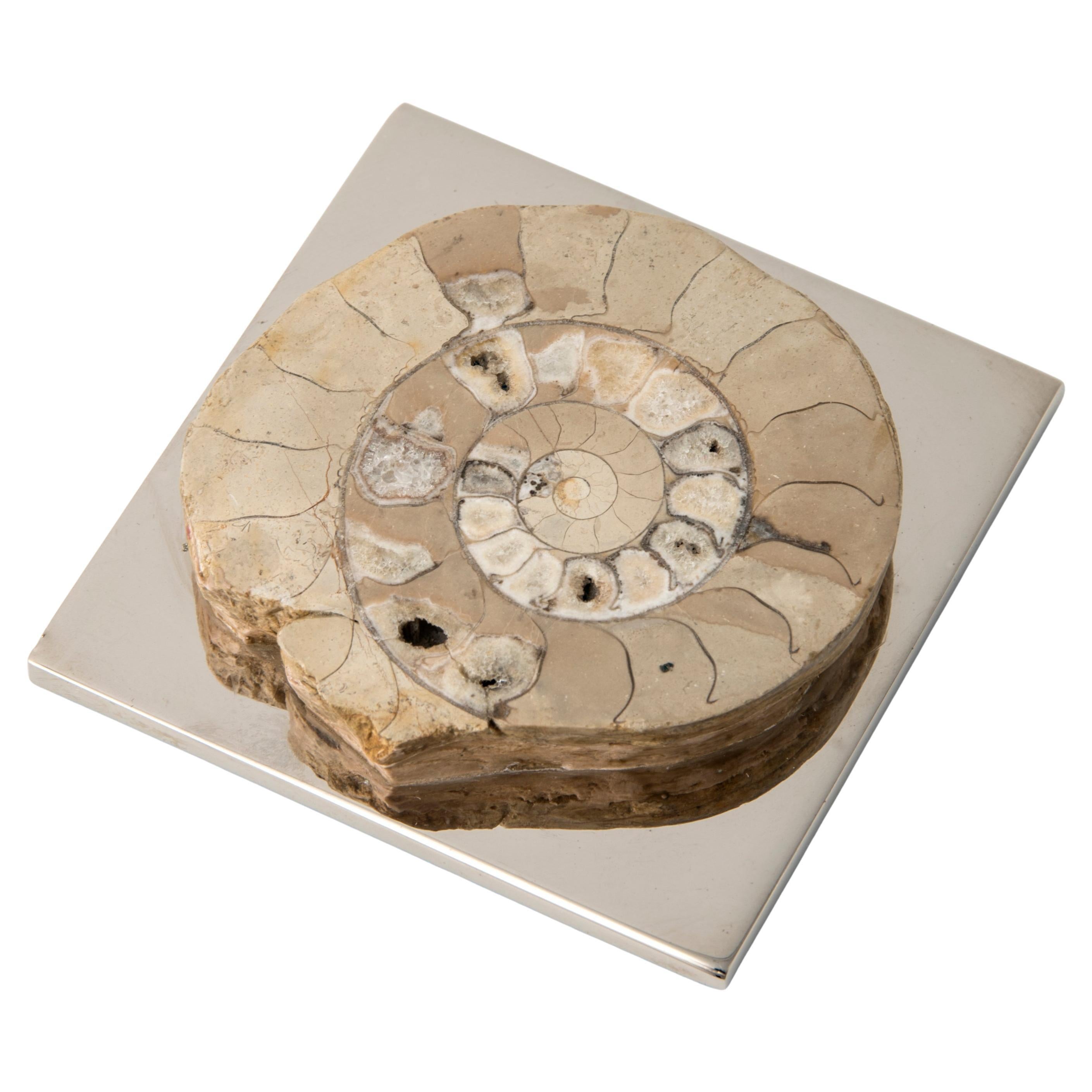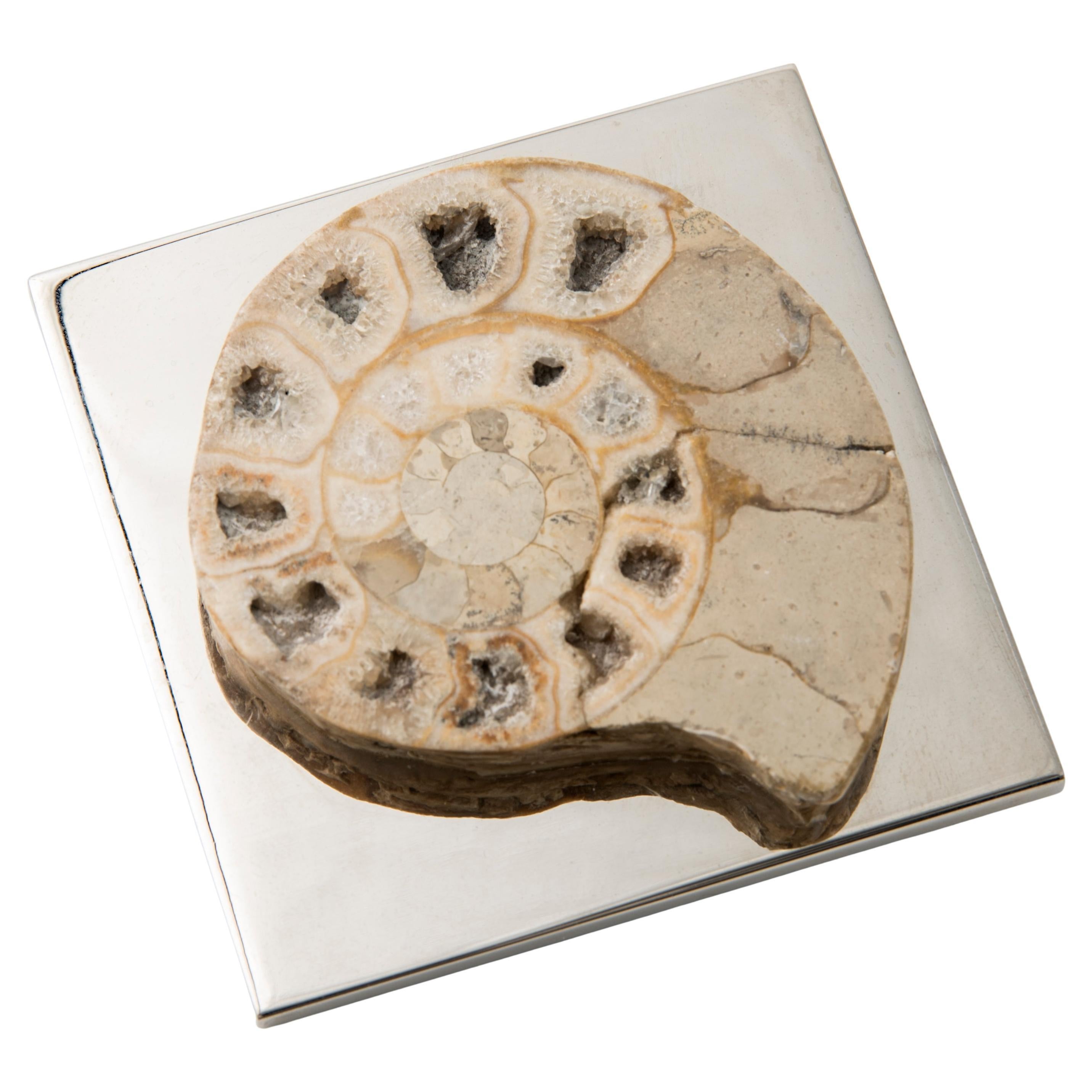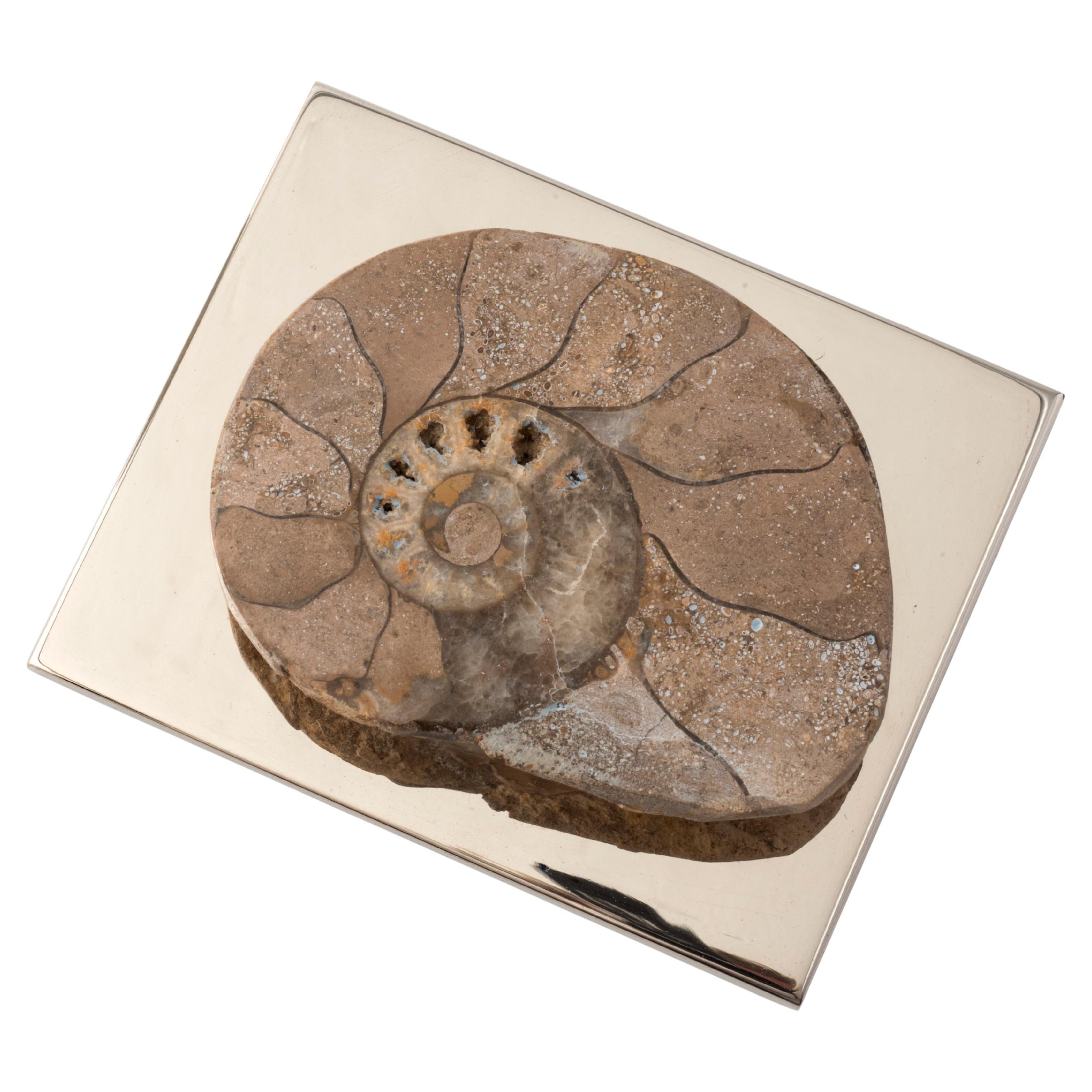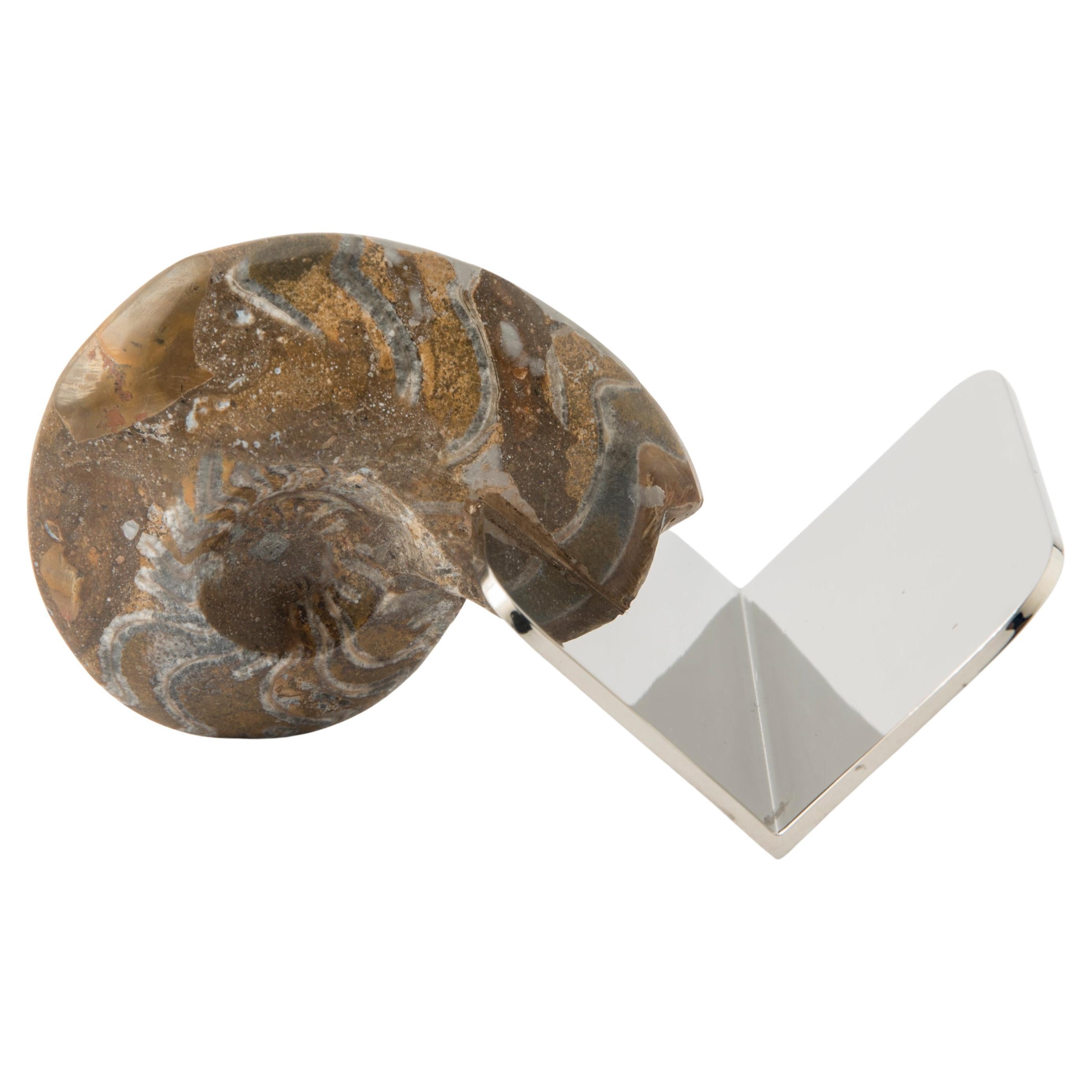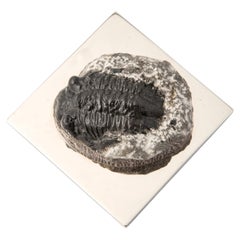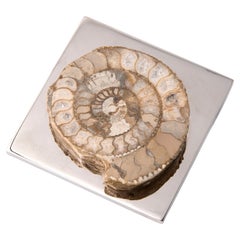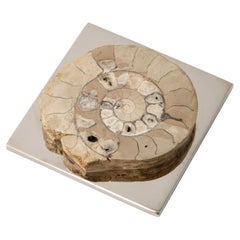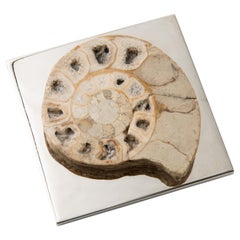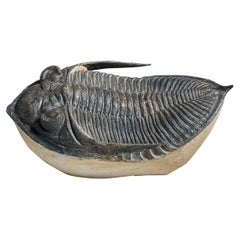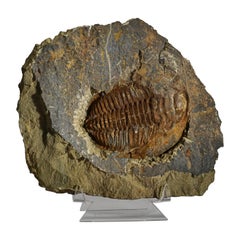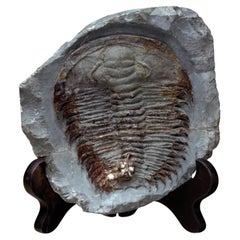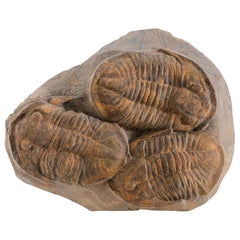Items Similar to FERMACHE WITH TRILOBITE real fossil of the Paleozoic Era to admire and use #2
Want more images or videos?
Request additional images or videos from the seller
1 of 6
FERMACHE WITH TRILOBITE real fossil of the Paleozoic Era to admire and use #2
$282.42
£209.79
€236
CA$389.62
A$428.30
CHF 225.10
MX$5,201.13
NOK 2,808
SEK 2,660.39
DKK 1,796.55
About the Item
On a basis in polished metal lies a magnificent fossil of genuine trilobite that seems to rest on top of a rock. Today, this exceptional marine organism lived millions of years ago, unique and unrepeatable, lives again in a astonishing paperweight to use and admire on a desk, on a bookshelf,.
A happy union between the past and modernity, conceived by Nino Basso, for a timeless accessory that exceeds functionality, a "unicum" for a quirky gift idea.
Photo illustrates the trilobite paperweight that will be shipped.
Specifications:
Paperweight measures 6.5 x 6.5 x H cm 2 - weight kg. 0.190
Trilobite Fossil authentic on rock - size cm. 7 x 3,5
Base: nickel-plated brass with glossy finish 6.5 x 6.5 cm
Box packaging 11.5 x 10 x h. 3.6 cm
Certified of warranty and care advice, inside the package
FOSSILINE Collection
Code 021-028-13B #2
- Creator:Design Center 1991 (Manufacturer),Nino Basso (Designer)
- Dimensions:Height: 2.56 in (6.5 cm)Width: 2.56 in (6.5 cm)Depth: 0.79 in (2 cm)
- Style:Modern (In the Style Of)
- Materials and Techniques:
- Place of Origin:
- Period:
- Date of Manufacture:2004
- Production Type:New & Custom(One of a Kind)
- Estimated Production Time:Available Now
- Condition:
- Seller Location:Spilimbergo, IT
- Reference Number:1stDibs: LU9292242173452
About the Seller
No Reviews Yet
Vetted Professional Seller
Every seller passes strict standards for authenticity and reliability
Established in 1991
1stDibs seller since 2023
- ShippingRetrieving quote...Shipping from: Spilimbergo, Italy
- Return Policy
Authenticity Guarantee
In the unlikely event there’s an issue with an item’s authenticity, contact us within 1 year for a full refund. DetailsMoney-Back Guarantee
If your item is not as described, is damaged in transit, or does not arrive, contact us within 7 days for a full refund. Details24-Hour Cancellation
You have a 24-hour grace period in which to reconsider your purchase, with no questions asked.Vetted Professional Sellers
Our world-class sellers must adhere to strict standards for service and quality, maintaining the integrity of our listings.Price-Match Guarantee
If you find that a seller listed the same item for a lower price elsewhere, we’ll match it.Trusted Global Delivery
Our best-in-class carrier network provides specialized shipping options worldwide, including custom delivery.More From This Seller
View AllFERMACHE WITH TRILOBITE real fossil of the Paleozoic Era to admire and use #1
By Design Center 1991, Nino Basso
Located in Spilimbergo, IT
On a polished metal base lies a magnificent fossil of authentic trilobite that appears to be resting on top of a rock. Today, this exceptional marine organism lived millions of y...
Category
Early 2000s Italian Modern Paperweights
Materials
Stone, Brass
FERMACHE WITH AMMONITE - real fossil of the Paleozoic Era rounded biege #3
By Design Center 1991, Nino Basso
Located in Spilimbergo, IT
An authentic ammonite with a round shape and elegant biege color shades that become lighter toward the center, revives in an elegant unique and unrepeatable paperweight.
The uniqu...
Category
Early 2000s Italian Modern Paperweights
Materials
Brass
FERMACHE WITH AMMONITE real fossil from the rounded Paleozoic Era biege #1
By Design Center 1991, Nino Basso
Located in Spilimbergo, IT
An authentic ammonite with a round shape and elegant biege color shades that become clearer toward the center, revives today in a elegant paperweight, unique and unrepeatable.
The ...
Category
Early 2000s Italian Modern Paperweights
Materials
Brass
FERMACHE WITH AMMONITE - real fossil of the Paleozoic Era rounded biege #2
By Design Center 1991, Nino Basso
Located in Spilimbergo, IT
A genuine ammonite with rounded shape and elegant biege color shades that become clearer toward the center, revives today in an elegant unique and unrepeatable paperweight.
The ...
Category
Early 2000s Italian Modern Paperweights
Materials
Brass
FERMACARTE WITH AMMONITE contemporary design with authentic fossil shell #1
By Nino Basso, Design Center 1991
Located in Spilimbergo, IT
Thought of as paperweight for an eclectic desk or bookcase shelf, this delightful small and unique sculpture, exceeds functionality to be also a piece of furniture exclusive and...
Category
Early 2000s Italian Modern Paperweights
Materials
Brass
Business Card Holder with Authentic Fossil Ammonite - Unique Piece
By Nino Basso, Design Center 1991
Located in Spilimbergo, IT
Give your desk an exclusive touch with this handcrafted business card holder, embellished with a real Manticoceras fossil ammonite, dating back 350 million years.
Each piece is uniq...
Category
2010s Italian Modern Desk Sets
Materials
Brass
You May Also Like
Genuine Trilobite Fossil (Ptychopariida) on Matrix (421.7 grams)
Located in New York, NY
Ptychopariida is a large, heterogeneous order of trilobite containing some of the most primitive species known. The earliest species occurred in the second half of the Lower Cambrian...
Category
21st Century and Contemporary Natural Specimens
Materials
Other
$2,800 Sale Price
20% Off
Genuine Trilobite (Ptychopariida) fossil on Matrix with acrylic display stand
Located in New York, NY
Ptychopariida is a large, heterogeneous order of trilobite containing some of the most primitive species known. The earliest species occurred in the second half of the Lower Cambrian...
Category
21st Century and Contemporary Natural Specimens
Materials
Cement, Other
$1,200 Sale Price
20% Off
Paradoxides Trilobite Fossil
Located in New York, NY
This Paradoxides trilobite specimen presented as-unearthed in matrix dates back over 499 million years to the Middle Cambrian Epoch. Paradoxides is one of the earliest known genus of...
Category
Antique 15th Century and Earlier Asian Natural Specimens
Materials
Other
Genuine Trilobite (Ptychopariida) fossil on Matrix with acrylic display stand (6
Located in New York, NY
Ptychopariida is a large, heterogeneous order of trilobite containing some of the most primitive species known. The earliest species occurred in the second half of the Lower Cambrian...
Category
21st Century and Contemporary Natural Specimens
Materials
Other
$3,120 Sale Price
20% Off
Fossil Paradoxides Acadoparadoxides Trilobite Surmounted Bronze stand
Located in Scorton, GB
THE FOSSIL STORE™ is a unique 1.3-meter-long Paradoxides acadoparadoxides trilobite plate of scientific significance. The one-piece fossil bed shale is now set into a rustic iron fra...
Category
Antique 15th Century and Earlier North African Prehistoric Natural Speci...
Materials
Limestone, Iron
Genuine Trilobite Fossil (Ptychopariida) on Matrix (387.3 grams)
Located in New York, NY
Ptychopariida is a large, heterogeneous order of trilobite containing some of the most primitive species known. The earliest species occurred in the second half of the Lower Cambrian...
Category
21st Century and Contemporary Natural Specimens
Materials
Cement, Other
$1,280 Sale Price
20% Off
More Ways To Browse
Bronze Desk Statue
Chain Paperweight
Derby Desk
Heart Shaped Paperweight
Murano Controlled Bubble Paperweight
Murano Glass Octopus
Murano Octopus
Pietra Dura Paperweight
Vintage Las Vegas Dice
Ceramic Insulator Vintage
Fornasetti Keys
Galliano Ferro On Sale
Glass Orb Paperweight
Jelly Murano
Penny Paperweight
Rene Lalique Moineau
Robert Indiana Love Paperweight
Seguso Egg
